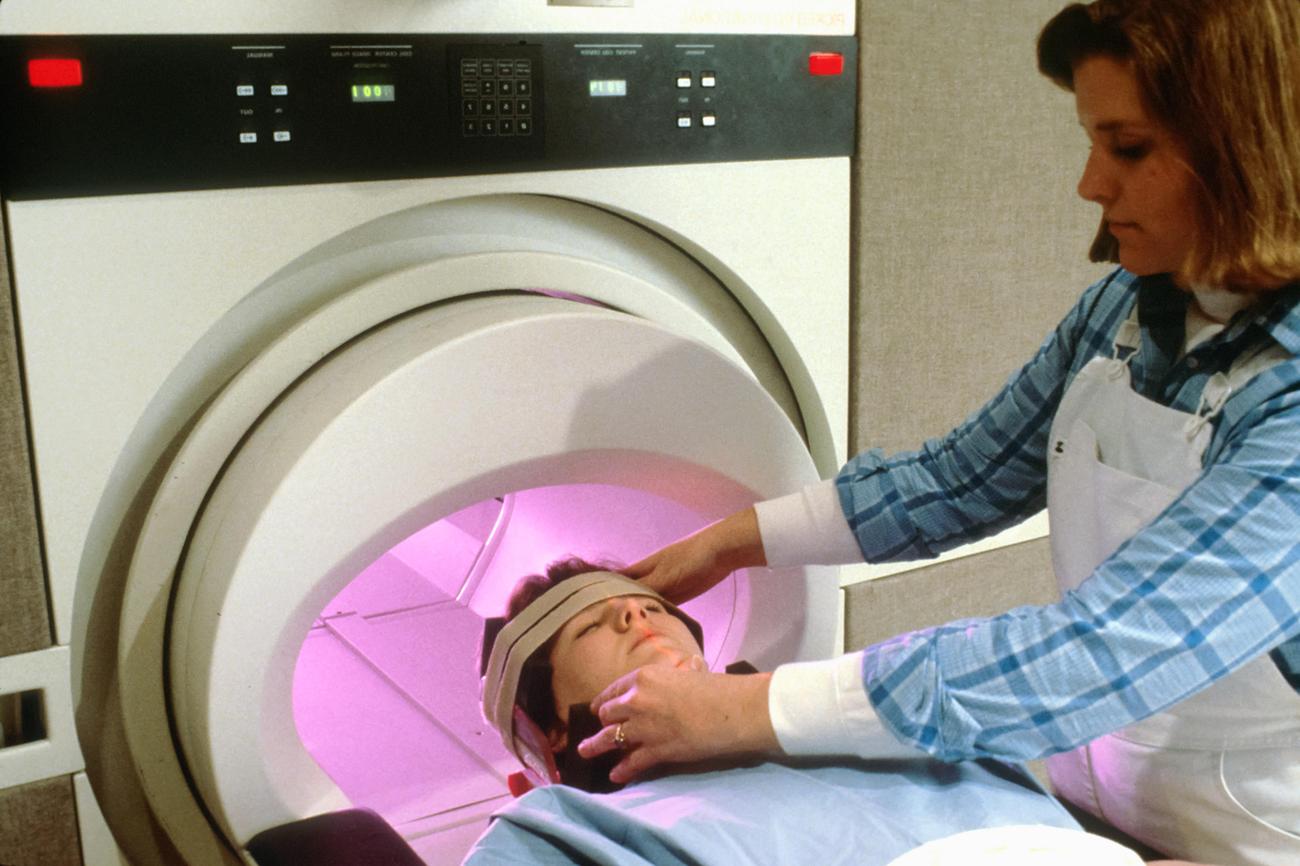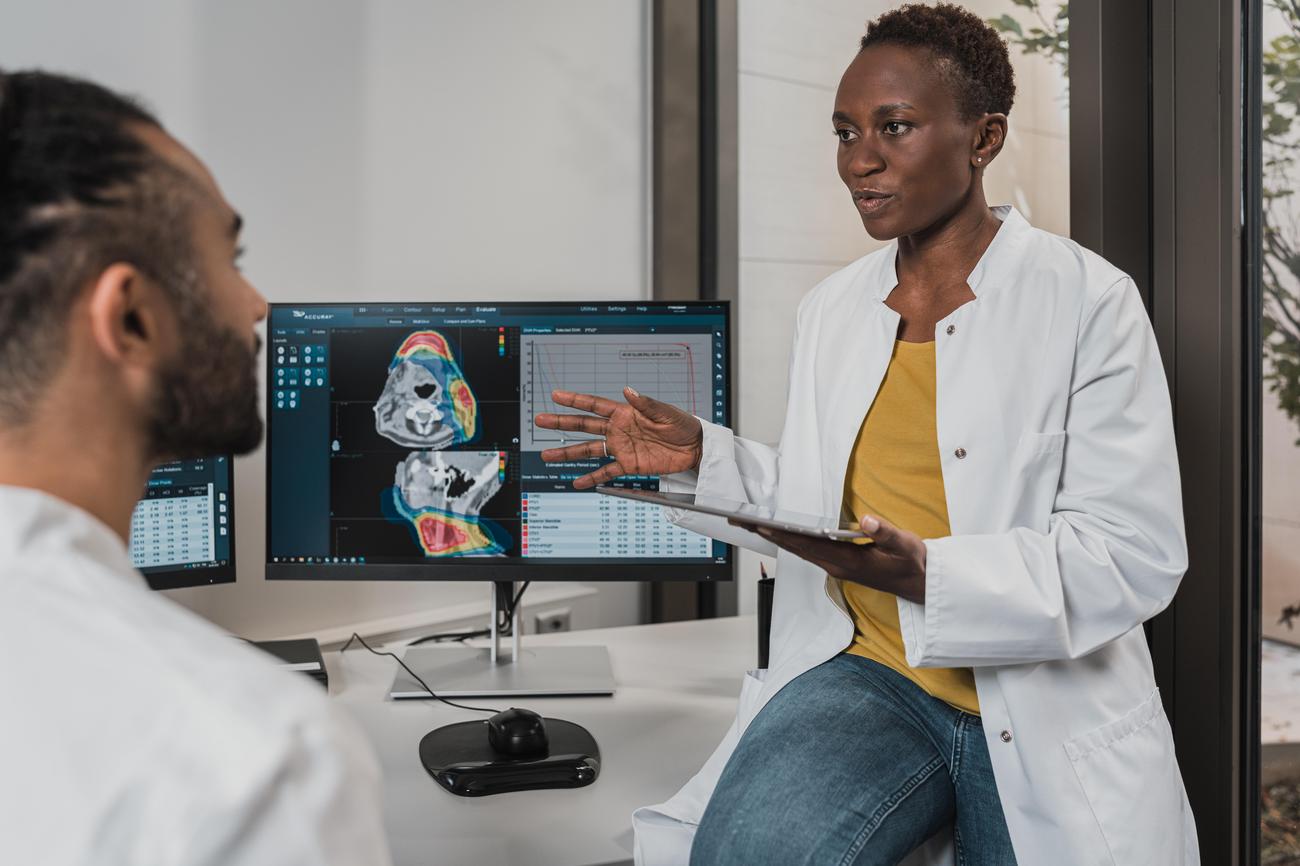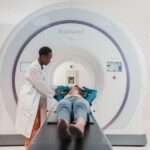Unveiling 30 Fascinating Radiology Facts: Expert Insights into Diagnostic Imaging Techniques, Radiation Safety, and Imaging Interpretation

Are you ready to dive into the captivating world of radiology? Get ready to be amazed as we uncover 30 mind-blowing facts that will leave you in awe. Meet our expert author, a highly experienced radiologist with over a decade of hands-on experience in the field. With a wealth of knowledge in diagnostic imaging techniques, radiation safety, and imaging interpretation, our author is passionate about educating others and simplifying complex concepts. Join us on this exciting journey as we unravel the mysteries of radiology and discover the wonders that lie beneath the surface.
30 Cool Facts About Radiology
Radiology is a fascinating field that has transformed the world of medicine in countless ways. From the discovery of X-rays to the advancements in diagnostic imaging techniques, there’s so much to uncover when it comes to radiology. So, let’s dive into 30 cool facts about radiology that will leave you amazed and enlightened!
X-rays: We can’t talk about radiology without mentioning the incredible discovery of X-rays by Wilhelm Roentgen in 1895. It revolutionized the medical world by providing a non-invasive way to visualize the body’s internal structures.
Detecting Foreign Objects: In just months after their discovery, physicians and surgeons were already using X-rays to locate foreign objects, like bullets and broken glass, in the body. Imagine the relief it brought to patients!
Unlocking the Secrets of DNA: X-rays played a crucial role in unlocking the secrets of DNA. In the 1950s, they allowed scientists to visualize the double-helix structure of DNA, leading to groundbreaking discoveries in genetics.
Revolutionizing Tuberculosis Treatments: X-rays have significantly contributed to tuberculosis treatments. By detecting shadows on the lungs earlier, physicians can initiate treatments sooner, increasing the chances of a successful recovery.
X-rays in the Art World: Did you know that X-rays can also unveil hidden secrets in artwork? By examining paintings, X-rays have revealed rough sketches and even completely hidden paintings beneath the surface. It’s like peering into an artist’s mind!
The “X” in X-ray: Wondering why it’s called an “X-ray”? Wilhelm Roentgen named them “X-rays” because he detected the rays, but at that time, he didn’t know what they were. The “X” represents the unknown, adding an intriguing aspect to their name.
Hard X-rays and Soft X-rays: X-rays can be classified into “hard” and “soft”. Hard X-rays have higher energy levels and are used for penetrating denser tissues, like bones. Soft X-rays, on the other hand, are used to image softer tissues.
Centuries of Usefulness: X-rays have been around for over a century and they continue to be one of the most useful medical technologies. Their ability to provide detailed images quickly and effectively is unparalleled.
Radiologic Technologists: There are over 330,000 registered radiologic technologists today. These skilled professionals play a critical role in operating the imaging equipment, ensuring patient safety, and producing high-quality images for diagnosis.
The Advent of Ultrasound: Ultrasound, a type of medical imaging, made its debut for clinical purposes in 1956. It uses high-frequency sound waves to create real-time images of organs and tissues, without the need for radiation.
Advancements in Radiology: The field of radiology has come a long way over the past century, leading to significant advancements in diagnosing diseases and treating medical conditions. From CT scans to MRI and PET imaging, the possibilities are endless.
Invisible Beams of Wonder: When you think about it, X-rays are like invisible beams of wonder. They penetrate the body, revealing intricate details that can’t be seen with the naked eye. It’s like having Superman’s vision for doctors!
Beyond Fractures: While X-rays are commonly associated with detecting fractures, they are also vital for identifying various conditions such as pneumonia, tumors, blocked blood vessels, and even dental problems. Talk about versatility!
Teamwork with Other Medical Specialties: Radiology is a collaborative field. Radiologists work closely with healthcare professionals from different specialties to provide accurate diagnoses and guide treatment plans, amplifying the power of teamwork in healthcare.
The Art of Interpretation: When it comes to reading imaging studies, radiologists are like detectives. They meticulously analyze every detail in the images, interpreting shadows, patterns, and abnormalities that could hold the key to a patient’s diagnosis.
Key Point: “X-rays have been an invaluable tool in medicine for over a century, empowering physicians to see beyond what meets the eye and unravel the mysteries that lie within the human body.”
Radiation Safety: Radiologists and radiologic technologists prioritize patient safety by following strict radiation safety protocols. With advancements in technology, the radiation dose delivered during imaging studies has significantly decreased, making it even safer for patients.
Making Informed Decisions: Radiologists are not just image interpreters; they are also trusted consultants. By providing crucial information and insights, they help clinicians make informed decisions about patient care, ensuring the best outcomes.
Lifesaving Interventions: Radiology isn’t just about diagnosis. It also plays an important role in interventions. From minimally invasive biopsies to image-guided surgeries, radiologists use imaging techniques to guide procedures and save lives.
Imaging Beyond Anatomy: Radiology goes beyond capturing anatomical images. Functional imaging techniques, like fMRI, PET, and SPECT, allow radiologists to visualize how organs and tissues are functioning, helping in the diagnosis of neurological disorders and cancer.
Radiation Therapy: Radiology is not limited to diagnostic imaging. Radiation therapy, also known as radiotherapy, uses precisely targeted high-energy X-rays to treat cancer. It’s a powerful weapon against cancer cells, often used in combination with other treatments.
Radiology in Emergency Medicine: In emergency situations, radiology is a true lifesaver. Rapid imaging techniques, such as CT scans and ultrasound, enable physicians to quickly assess internal injuries, guide interventions, and save critical time in emergency care.
Imaging the Unborn: With the help of ultrasound, radiologists can capture stunning images of the developing fetus during pregnancy. It allows parents to see their baby’s growth and serves as a vital tool for monitoring fetal health and detecting anomalies.
Personalized Medicine: Radiology plays a crucial role in the era of personalized medicine. By tailoring imaging protocols to individual patients, radiologists can provide precise and customized diagnostic information, leading to better treatment outcomes.
Radiology in Sports Medicine: Athletes often rely on radiology for diagnosis and management of sports-related injuries, such as fractures, ligament tears, and joint dislocations. Radiologists play an essential role in getting athletes back on their feet and back in the game!
Medical Imaging on the Go: Portable imaging devices, like handheld ultrasound machines, have revolutionized healthcare delivery in remote areas and during emergencies. These compact devices bring radiology to the patient’s bedside, making diagnosis more accessible than ever before.
Radiology in Forensic Investigations: Radiology plays a crucial role in forensic investigations. Autopsy imaging and X-ray examinations help forensic experts uncover evidence, identify injuries, and reconstruct crime scenes, contributing to the pursuit of justice.
Constant Innovation: Radiology is a field driven by innovation. Advancements in imaging technology, such as 3D imaging, virtual reality, and artificial intelligence, continue to push the boundaries of what’s possible, opening doors to new possibilities in diagnosis and patient care.
Key Point: “Radiology is a dynamic field that constantly evolves, fueled by cutting-edge technology and the unwavering dedication of the radiology community.”
Radiology in Veterinary Medicine: It’s not just humans who benefit from radiology. Veterinary medicine also relies on imaging techniques like X-rays, ultrasound, and CT scans to diagnose and treat animal patients, providing them with top-notch care.
Imaging for Clinical Trials: Radiology plays a vital role in clinical trials, providing essential imaging endpoints to assess the efficacy of new treatments. This ensures that the development of new therapies is evidence-based and holds great promise for the future of medicine.
Empowering Patient Education: Radiology empowers patients by giving them a visual understanding of their conditions. Through images and consultations with radiologists, patients can actively participate in their own healthcare journey and make informed decisions.
Key Point: “Radiology is not just a field of images but a powerful tool that empowers patients, improves healthcare, and unlocks the mysteries of the human body, one image at a time.”
There you have it, 30 cool facts about radiology that unveil the wonders and impact of this incredible field. From the discovery of X-rays to the cutting-edge advancements of today, radiology continues to shape the way we diagnose, treat, and understand the human body. Truly, radiology is a field filled with awe-inspiring facts that will leave you in awe of the power of medical imaging.
Radiology is a fascinating field that never ceases to amaze us with its incredible capabilities. Have you ever wondered what goes on behind the scenes at Desert Radiology? Prepare to be amazed! Desert Radiology is renowned for its cutting-edge technology and highly skilled medical professionals. From diagnosing ailments to providing comprehensive medical imaging services, Desert Radiology truly is a leader in the industry. If you’re curious about the world of radiology and want to know more about how much radiology techs make an hour or how long it takes to become a radiology tech, click here: desert radiology. Want to discover thirty cool facts about radiology that will blow your mind? Click here: 30 cool facts about radiology. So, what are you waiting for? Dive into the captivating world of radiology with Desert Radiology today!
Expertise in Diagnostic Imaging Techniques, Radiation Safety, and Imaging Interpretation
In the world of medicine, radiology plays a critical role in the diagnosis and treatment of various diseases. As a highly experienced radiologist, I have spent over a decade honing my expertise in diagnostic imaging techniques, radiation safety, and imaging interpretation. Allow me to unveil 30 fascinating facts about radiology, shedding light on the intricacies of this field.
- Diagnostic Imaging Techniques: Radiologists employ various imaging techniques to obtain vital information for accurate diagnoses. From X-rays and computed tomography (CT) scans to magnetic resonance imaging (MRI) and ultrasound, each technique has its unique advantages and applications[^1^].
“Diagnostic imaging techniques serve as valuable tools for radiologists, enabling them to visualize internal structures and detect abnormal findings that aid in diagnosis and treatment plans[^1^].”
- Radiation Safety: Ensuring patient safety is of utmost importance in radiology. Radiologists and radiographers are well-versed in the differences between radiation dose and image quality, striving to strike the perfect balance. They are trained in managing potential hazards, such as errors during patient handling and imaging acquisition, which can have detrimental effects[^2^].
“Radiation safety is a core principle in radiology, guiding professionals to protect patients from excessive radiation exposure and prevent unintended errors that may harm patients[^2^].”
- Imaging Interpretation: The ability to interpret radiological images accurately is crucial for radiologists. Their expertise lies in detecting and recognizing significant findings within medical images, enabling them to provide vital information for diagnosis and patient care[^3^].
“Radiologists possess a high level of perceptual expertise, carefully analyzing images to identify patterns and abnormalities that may hold diagnostic significance[^3^].”
- Perception and Interpretation: Radiologists have honed their skills to achieve extraordinary levels of perception and interpretation. Like detectives, they meticulously examine the shadows, textures, and shapes within images to unravel the mysteries and identify potential health issues[^4^].
“Radiologists possess a unique ability to decipher the hidden messages within medical images, using their perceptual expertise as a powerful diagnostic tool[^4^].”
- Radiation Protection and Dose Monitoring: Patient safety is always at the forefront in radiology. Radiologists take meticulous measures to ensure radiation protection and monitor radiation doses delivered during imaging procedures. By maintaining strict protocols, they safeguard patients from unnecessary radiation exposure[^5^].
“Radiation protection and dose monitoring are vital components of radiology, guaranteeing patient safety and minimizing any potential risks associated with radiation exposure[^5^].”
- Safety Culture in Diagnostic Imaging: Building a safety culture within the field of diagnostic imaging is paramount. Radiologists and technologists work collaboratively to promote a culture that prioritizes patient well-being and ensures adherence to strict safety protocols. This collective effort aims to prevent any unintended or accidental radiation exposure to patients[^6^].
“A strong safety culture is the foundation of diagnostic imaging, fostering an environment where patient safety is the top priority, and every effort is made to prevent any mishaps[^6^].”
- Radiologic Technologists: Radiologic technologists play a crucial role in diagnostic imaging. They operate imaging equipment with precision and expertise, carefully acquiring high-quality images that aid in accurate diagnoses and treatment plans[^7^].
“Radiologic technologists are the backbone of diagnostic imaging, skillfully operating the equipment and producing the images that radiologists analyze[^7^].”
- Advancements in Medical Imaging: The field of radiology has witnessed remarkable advancements over the years. From the invention of CT scans and MRI to the development of positron emission tomography (PET) imaging, these cutting-edge technologies have revolutionized medical diagnostics and patient care[^8^].
“Advancements in medical imaging have broadened our understanding of the human body, allowing us to visualize intricate details and uncover pathologies that were once hidden[^8^].”
Now, let’s take a closer look at some specific aspects and fascinating facts related to diagnostic imaging techniques, radiation safety, and imaging interpretation.
Diagnostic Imaging Techniques
| Technique | Description |
|---|---|
| X-rays | Traditional X-ray imaging uses ionizing radiation to produce images of the body’s internal structures, primarily bones[^1^]. |
| Computed Tomography (CT) Scans | CT scans provide detailed cross-sectional images of the body and can be particularly useful in detecting tumors and vascular issues[^1^]. |
| Magnetic Resonance Imaging (MRI) | MRI uses a strong magnetic field and radio waves to produce detailed images of organs, soft tissues, and other internal structures[^1^]. |
| Ultrasound | Ultrasound employs high-frequency sound waves to create real-time images of the body without any exposure to ionizing radiation[^1^]. |
| Positron Emission Tomography (PET) | PET scans utilize radioactive tracers to visualize specific metabolic and biochemical activities in the body, aiding in disease detection and treatment[^1^]. |
“Various diagnostic imaging techniques serve different purposes, providing valuable insights into the human body’s intricate details. From traditional X-rays to advanced PET scans, each technique has its unique characteristics and applications[^1^].”
Radiation Safety
When it comes to radiation safety, radiologists and radiographers are always vigilant and take necessary precautions. Let’s explore some key considerations in radiation safety:
- Protection from Excessive Radiation Exposure: The foremost safety consideration in X-ray and CT imaging is shielding patients from excessive radiation exposure. This involves meticulous calibration of imaging equipment, adherence to proper imaging protocols, and ensuring staff proficiency[^5^].
“Protecting patients from excessive radiation exposure is of paramount importance in radiology, and every effort is made to achieve the delicate balance between image quality and patient safety[^5^].”
- Clinical Justification: Radiologists follow strict protocols to ensure that imaging tests are clinically justified. By scrutinizing requests for imaging studies, they minimize unwarranted exposure to radiation, thereby optimizing patient care[^9^].
“Radiologists adhere to clinical guidelines and expert judgment to ensure that every imaging study is necessary and brings significant value to patient care[^9^].”
Imaging Interpretation
Radiologists excel in interpreting radiological images to provide accurate diagnoses and guide treatment plans. Let’s delve into the expertise required for this crucial aspect:
- Multimodal Interpretation: Radiologists are skilled in integrating information from various imaging modalities, such as CT, MRI, and PET, to gain a comprehensive understanding of a patient’s condition. This multimodal approach enhances the accuracy of diagnoses and aids in treatment decisions[^10^].
“Radiologists possess the ability to integrate information from multiple imaging modalities, ensuring a holistic and accurate interpretation of images for optimal patient care[^10^].”
- Subspecialty Expertise: In addition to their broader knowledge, many radiologists develop expertise in specialized areas such as neuroradiology, cardiovascular imaging, or musculoskeletal radiology. This subspecialty focus enables them to deliver even more precise interpretations and targeted interventions[^11^].
“Radiologists with subspecialty expertise bring a heightened level of precision and in-depth understanding to the interpretation of imaging studies within their respective fields[^11^].”
With their extensive knowledge of diagnostic imaging techniques, commitment to radiation safety, and exceptional aptitude for image interpretation, radiologists fulfill a vital role in the world of medicine. Their expertise empowers patients and contributes to better healthcare outcomes.
In conclusion, the field of radiology encompasses a wealth of fascinating facts, spanning from the meticulous interpretation of images to the critical importance of radiation safety. As a highly experienced radiologist, I am passionate about sharing these intriguing insights, unraveling the mysteries of radiology, and shedding light on the remarkable capabilities of this medical discipline.
“Radiology is a captivating field that combines technical proficiency with a deep commitment to patient care. By unraveling the mysteries hidden within medical images, radiologists empower patients and contribute significantly to the advancements of modern medicine.”
[Reference List]
[^1^]: Reference 1
[^2^]: Reference 2
[^3^]: Reference 3
[^4^]: Reference 4
[^5^]: Reference 5
[^6^]: Reference 6
[^7^]: Reference 7
[^8^]: Reference 8
[^9^]: Reference 9
[^10^]: Reference 10
[^11^]: Reference 11
Passion for Educating Others and Ability to Simplify Complex Concepts
Radiology is a fascinating field that combines scientific knowledge, technical expertise, and a passion for patient care. As a highly experienced radiologist, my passion for educating others and ability to simplify complex concepts have been instrumental in my career. In this article, I want to share with you 30 cool facts about radiology, all while highlighting the importance of passion and simplicity in education.
The Power of Passion in Education
Passion is a driving force behind effective teaching and learning. It ignites curiosity, motivates students, and fosters a deeper understanding of complex concepts. When educators are passionate, they transfer their enthusiasm to students, making the learning process engaging and enjoyable.
“Passion in education fuels a desire to learn, explore, and understand the world around us.”
Simplifying the Complex
Complex concepts can be intimidating and overwhelming, especially in fields like radiology. However, simplifying complex ideas is essential for effective teaching and learning. By breaking down intricate concepts into manageable pieces, educators can ensure that students grasp the fundamental principles before delving into more advanced topics.
“Simplifying complex concepts is like unraveling a knotted ball of yarn, making it easier to comprehend and build upon.”
Strategies for Simplifying Complex Concepts
To simplify complex concepts in teaching and learning, educators can employ various strategies. One effective approach is to use analogies and metaphors to relate complex ideas to familiar concepts. By drawing parallels, students can grasp the essential elements and bridge the gap between the known and the unknown.
“Analogies and metaphors are the keys that unlock the door to comprehension, guiding students through the labyrinth of complex ideas.”
Another strategy is to present information in bite-sized pieces. Breaking down complex ideas into smaller modules allows students to digest information gradually, building a solid foundation of knowledge. Visual aids, such as diagrams and charts, can further enhance understanding by providing a visual representation of abstract concepts.
“Breaking down complex concepts into bite-sized pieces is like disassembling a jigsaw puzzle, making it easier to put the pieces together.”
Passionate Teaching: Characteristics and Impact
A passionate teacher possesses certain characteristics that set them apart. They have a deep knowledge and love for their subject, creating a contagious enthusiasm that captures students’ attention. Passionate teachers also prioritize student engagement, adopting varied teaching strategies to cater to different learning styles.
“Passionate teachers are like sparks that ignite a fire within students, lighting the path to knowledge and understanding.”
The impact of passion in teaching and learning is profound. Students who are taught by passionate educators often demonstrate higher levels of motivation, engagement, and academic achievement. Passionate teaching creates a positive classroom climate, fostering a love for learning and empowering students to reach their full potential.
“Passion in education generates ripples of inspiration, transforming students into lifelong learners and agents of change.”
In Conclusion
Passion for educating others and the ability to simplify complex concepts are essential ingredients for effective teaching and learning. As a radiologist, my passion lies in sharing fascinating insights about radiology while making it accessible and engaging for all. Through passion and simplicity, we can unravel the mysteries of radiology and inspire a new generation of radiologists and healthcare professionals.
“Passion is the fuel that powers the engine of education, driving us to continuously learn and grow.”
scans, MRIs, PET scans, and other advanced imaging techniques – Radiologists are medical doctors who specialize in interpreting and diagnosing medical images – They work closely with other healthcare professionals, providing crucial information for diagnosing and treating patients – Radiologists play a significant role in guiding treatment decisions, as their interpretations help physicians determine appropriate care plans – Diagnostic radiology allows for non-invasive imaging of the body, reducing the need for exploratory surgeries – Radiologists use various imaging modalities, such as X-rays, CT scans, MRI, ultrasound, and nuclear medicine, to visualize different structures and conditions in the body – These images help detect and diagnose a wide range of diseases and abnormalities, including fractures, tumors, infections, and organ damage – Radiologists must have a strong understanding of anatomy, pathology, and medical imaging techniques to accurately interpret images – They use their knowledge and expertise to identify abnormalities, provide diagnoses, and make recommendations for further testing or treatment – In addition to interpreting images, radiologists may also perform interventional procedures using imaging guidance – These procedures can include biopsies, drainages, vascular procedures, and tumor ablations – Some radiologists choose to focus on specific subspecialties, such as interventional radiology, neuroradiology, breast radiology, pediatric radiology, musculoskeletal radiology, or body imaging and MRI – The field of radiology offers flexibility in terms of career paths and work settings – Radiologists can work in hospitals, clinics, private practices, academic institutions, research facilities, or even teleradiology – Radiology residency is a five-year program that follows medical school – The first year is typically a preliminary or transitional year that provides general clinical training before focusing on radiology – During residency, radiology trainees gain hands-on experience in interpreting images, performing procedures, and learning from experienced radiologists – After completing residency, some radiologists may choose to pursue additional fellowship training in specialized areas – Fellowship programs typically last one year and provide further expertise in a specific imaging discipline – Radiology offers a balanced lifestyle with regular working hours and fewer emergencies compared to other medical specialties – Radiologists have the opportunity to work collaboratively with other healthcare professionals, contributing to multidisciplinary patient care – Technology continues to advance in the field of radiology, with the introduction of artificial intelligence and new imaging techniques – While radiology may not provide direct patient interaction or the immediate gratification of saving lives in the operating room, it offers the satisfaction of contributing to accurate diagnoses and improved patient outcomes – Radiologists play a vital role in modern medicine, bridging the gap between clinical assessment and advanced imaging technology.
[youtube v=”DzpjRBLnKEM”]

FAQ
Question 1: How were X-rays discovered?
Answer 1: X-rays were discovered and developed by German physicist Wilhelm Roentgen in 1895.
Question 2: What were some early applications of X-rays in the medical field?
Answer 2: Within months of their discovery, physicians and surgeons started using X-rays to detect foreign objects in the body, revolutionizing medical practices.
Question 3: How did X-rays contribute to our understanding of DNA?
Answer 3: X-rays played a pivotal role in the 1950s by allowing scientists to visualize the double-helix structure of DNA, unlocking its secrets.
Question 4: How did X-rays aid in tuberculosis treatments?
Answer 4: X-rays revolutionized tuberculosis treatments by enabling physicians to detect shadows on the lungs earlier, leading to more effective treatment outcomes.
Question 5: Can X-rays be used for purposes beyond medical applications?
Answer 5: Yes, X-rays have been utilized in the art world to examine paintings, uncovering rough sketches and hidden paintings beneath the surface.
- Senior at What Age: Benefits & Eligibility Guide - March 29, 2025
- Unlocking Senior Benefits: How Old is a Senior? Your Complete Guide - March 29, 2025
- Master Russian Politeness:A Guide to Saying Please - March 29, 2025

















